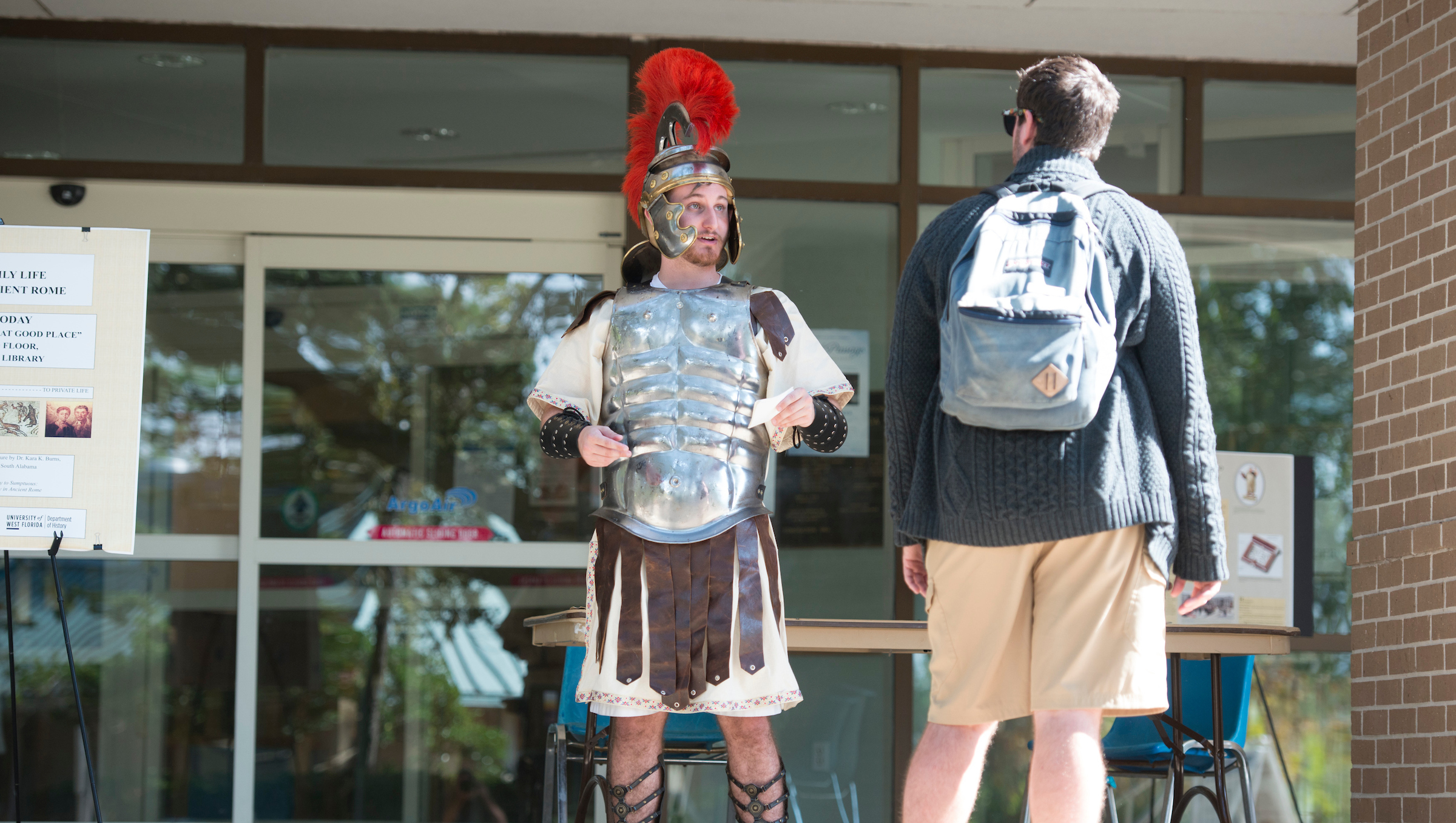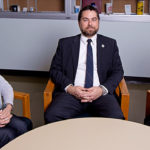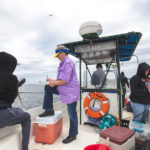Students Present ‘Life in Ancient Rome’ Research Projects
Pensacola — University of West Florida students dressed in authentic Roman garb delivered research presentations as part of the “Daily Life in Ancient Rome” symposium Oct. 27 in the John C. Pace Library.

“You walk away from this really feeling like you know the material,” said Montana Delagarza, a junior majoring in art history. She gave a report on mealtime fare from the period and provided examples for peers and spectators to taste during her 10-minute presentation. Among the many dishes she prepared was “dulciaria,” a combination of dates, pine nuts and pepper.
Delagarza was one of 25 presenters from Dr. Marie-Therese Champagne’s 3000-level history class called “Rome and the Mediterranean World” who participated in the forum which lasted from 9 a.m. to 5 p.m.
Each of the 25 students was assigned a topic on which to speak, and their speech had to be based on research from primary sources, Champagne said. Everyone dressed in the wardrobe of the period to make their presentations. UWF professor Glenn Avery Breed and his students in the costume shop of the theatre department created all the clothing the presenters wore.
“Once I started with the research, it was a blast,” said Mitchell Leon-Baez, a senior majoring in history. “It was interesting to learn about the different roles the ‘Pontifex Maximus’ played in society. It turns out he wasn’t just like a priest overseeing all the religious matters of ancient Rome. He was a bureaucrat, and it was a prestigious office. It’s fun to find out something from the primary sources that you didn’t already know.”
Students’ topics fell into the wide-ranging category of “From the Public Arena to Private Life.” Besides midwifery, food, and military tactics, there were presentations on the lives of the Vestal Virgins, charioteers, long-distance traders, religious officials, gladiators, galley and house slaves, and augers. Other students portrayed specific people from history including the poet Ovid and the writer Juvenal.
“Doing the research was enlightening,” said Dillon Maddox, a senior majoring in history, who portrayed Julius Caesar for his presentation. “I discovered the complexities surrounding the politics of Caesar’s ascension. The level of corruption in all facets of the system and the government surprised me.”
Champagne used a $5,000 Quality Enhancement Plan grant from the University to fund the high-impact learning event, which concentrated on life in Rome from about 300 BC to 300 AD. High impact learning is an immersive approach designed to engage students directly with material rather than relying on traditional lectures by the professor.
“I think it was a tremendous success,” Champagne said. “You can tell from the presentations and the way they answered questions that the students worked hard to use primary sources in their research, and the information they presented certainly proves that truth is stranger than fiction.”
Champagne, who said she plans to do the event again next fall, emphasized the importance of the oral presentations at the event.
“This is a real-life tool,” she said. “No matter what you go on to do, it’s important to be able to communicate clearly with people.”
“The Daily Life in Ancient Rome” event closed with a guest lecture called “From Simplicity to Sumptuous: The Dinner Party in Ancient Rome.” Dr. Kara Burns, a classical art historian from the University of South Alabama, gave the talk. She said the ancient Romans used the dining experience as a way to impress their friends and business associates, to elevate their social status, execute political maneuvers and illustrate their power.



